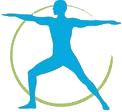
Hypermobility Syndrome – how can being ‘double-jointed affect you
You may have heard of the term ‘double jointed’ and the chances are, you probably know someone who is double-jointed – or maybe you are yourself. But what does this term actually mean?
Being double-jointed is actually called hypermobility syndrome, which means you have a much larger range of motion in the joints than normal. It is thought to affect around 20 per cent of the population, but only in a small minority will pain, discomfort or other symptoms be present.
However, people with more severe cases may experience a number of difficulties, including increased risk of injury and dislocation, as well as muscle fatigue as a result of weaknesses in the ligaments.
Joint hypermobility is also a feature of a rare, inherited and more significant medical condition called Ehlers-Danlos Syndrome (EDS), which is characterised by weakness of the connective tissues of the body. As well as affecting the joints and muscles, this can have an impact on the body’s internal organs due to dysfunctions in the nervous system, in particular leading to problems with the bowels, intestines and bladder.
What causes hypermobility syndrome?
Joint hypermobility can often be hereditary and cannot be prevented. The condition occurs when the ligaments that are there to hold the joints together are too loose and therefore weakened.
Muscle tone can also be a contributing factor to hypermobility. The role of muscles is to add strength and stability to the joints, so if someone has low muscle tone, their risk of hypermobility will be increased.
The shape of the structures that hold bones in place, like the sockets in their hips or shoulders, can also be shallower that normal in some people, which allows extra movement to occur in the joint and leads to hypermobility.
What are the symptoms of hypermobility syndrome?
Symptoms will vary depending on the severity of the condition, but the most common issues experienced include:
- Pain, stiffness or swelling in joints and/or muscles, especially after physical work or exercise.
- Recurrent sprains and strains of ligaments and muscles.
- Dislocation of joints.
- Poor balance or coordination – this can include regularly feeling faint or dizzy.
- Experience bladder or bowel problems.
- Tiredness or fatigue.
The joints most commonly affected by hypermobility are knees, shoulders, elbows, wrists and fingers. In extreme cases, sufferers can experience symptoms in multiple areas of their body, which is known as generalised hypermobility syndrome, and it can cause significant joint pain and discomfort.
Will I need treatment if I have hypermobility syndrome?
In most cases, hypermobility syndrome won’t cause any problems and won’t require treatment. However, if you are experiencing any of the symptoms above and you’re concerned you may have hypermobility syndrome, it’s important to visit your GP who will test the flexibility of your joints in order to make a diagnosis.
They may suggest a course of over the counter pain medication to help alleviate symptoms, as well as make a referral to a physiotherapist.
Physiotherapy can treat any level of hypermobility syndrome and can be an extremely effective way of reducing symptoms. Following an individual assessment, your physiotherapist will determine the best combination of treatments to optimise the outcome of your recovery programme.
In most cases, a course of gentle exercises to strengthen and condition the muscles around the hypermobile joints will be advised, as well as gentle cardiovascular activities.
Other forms of physiotherapy may include postural exercises, stretching exercises and in some extreme cases the provision of splints or supports for the affected joints.
We see a number of patients here at Physiomove who we successfully treat for hypermobility, but it’s important to begin treatment as soon as possible to achieve the best possible outcome.
If you’re looking for treatment for hypermobility and think we can help you, contact us today.











